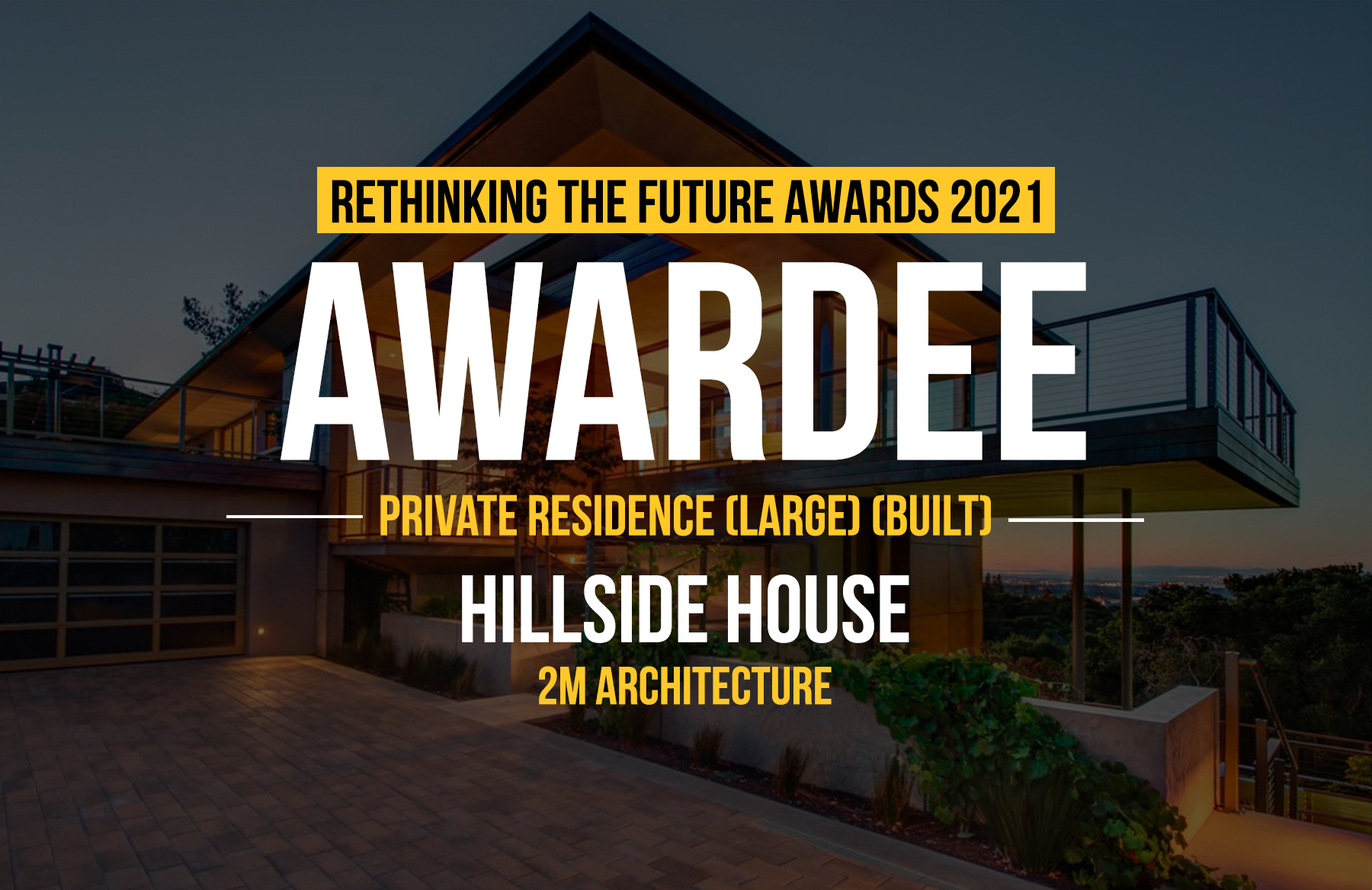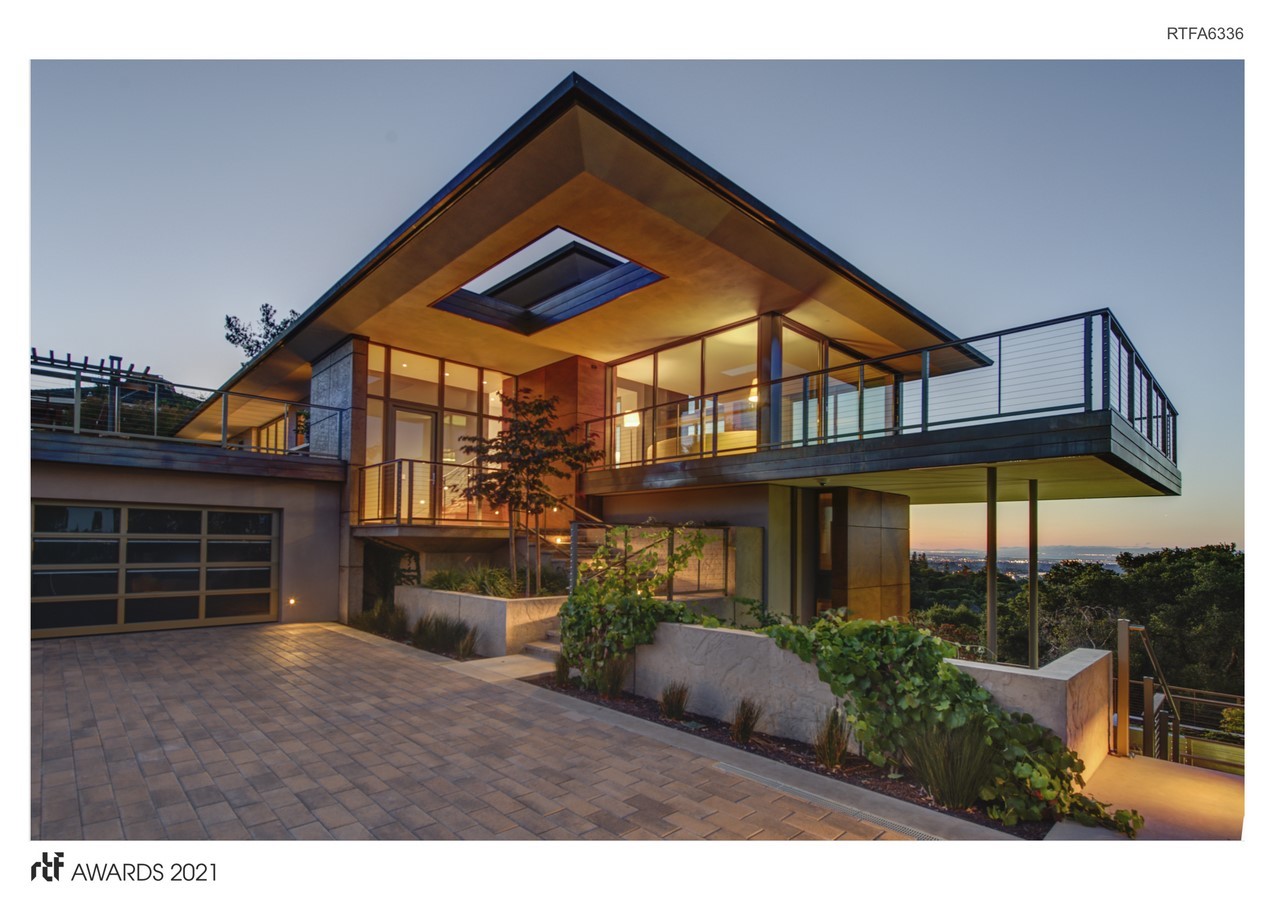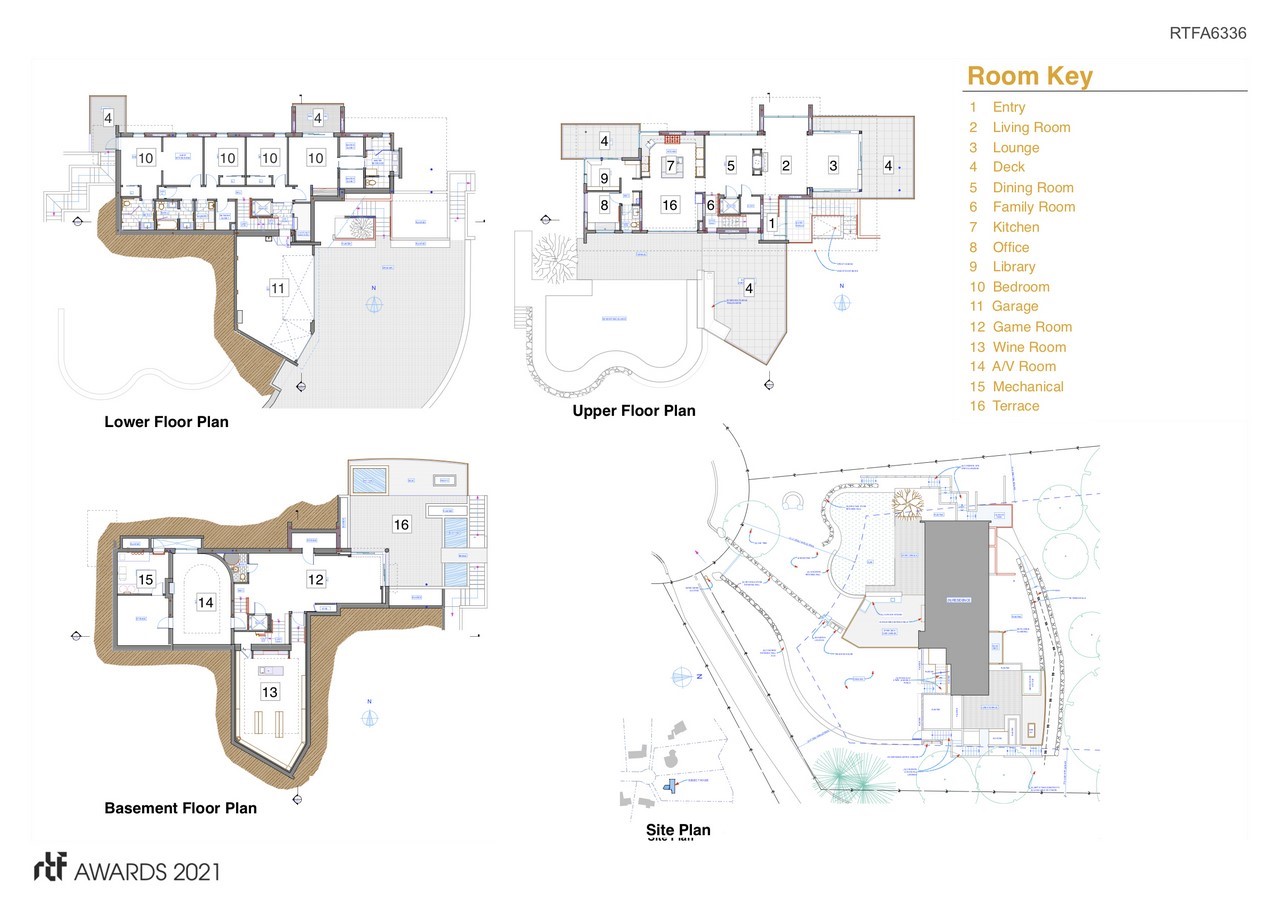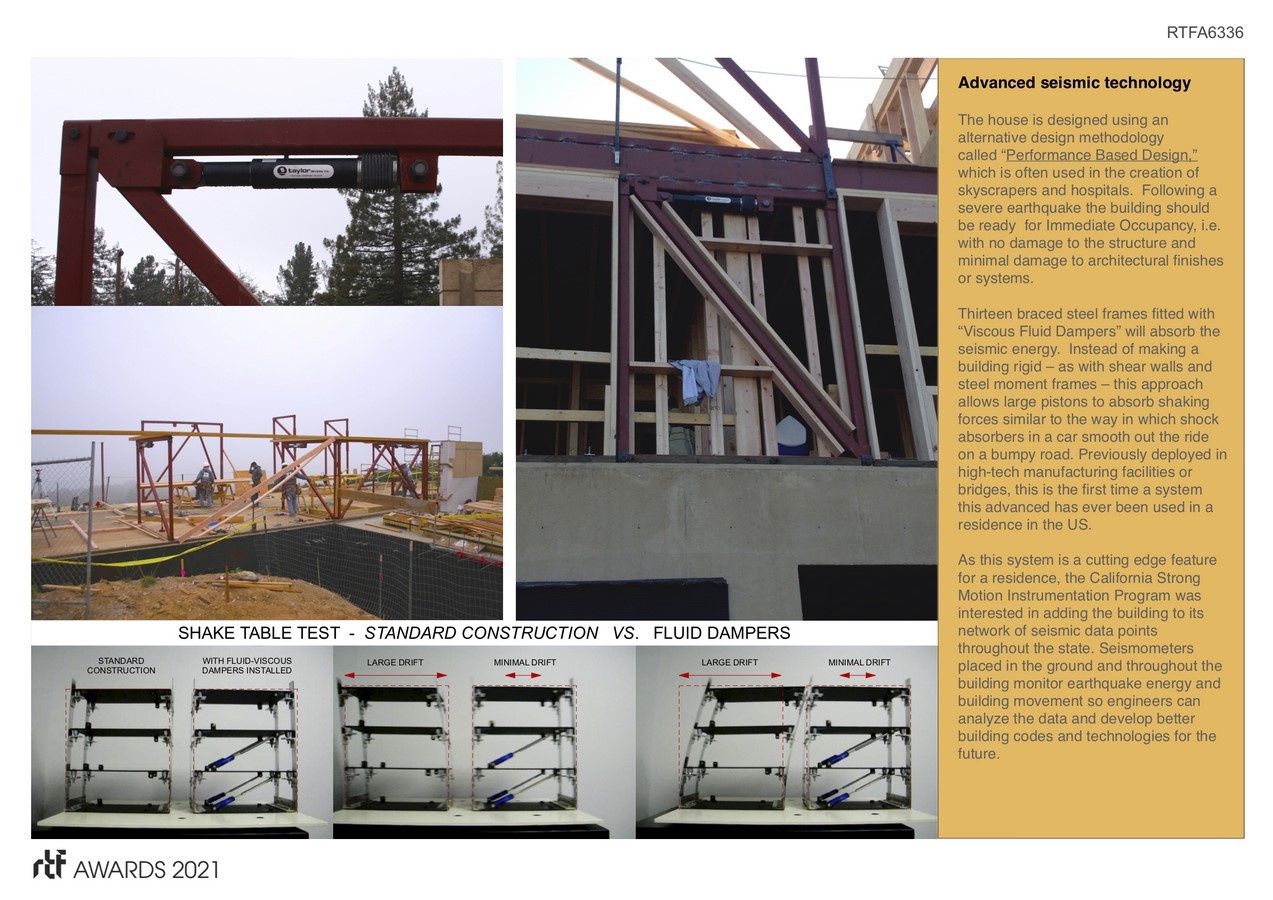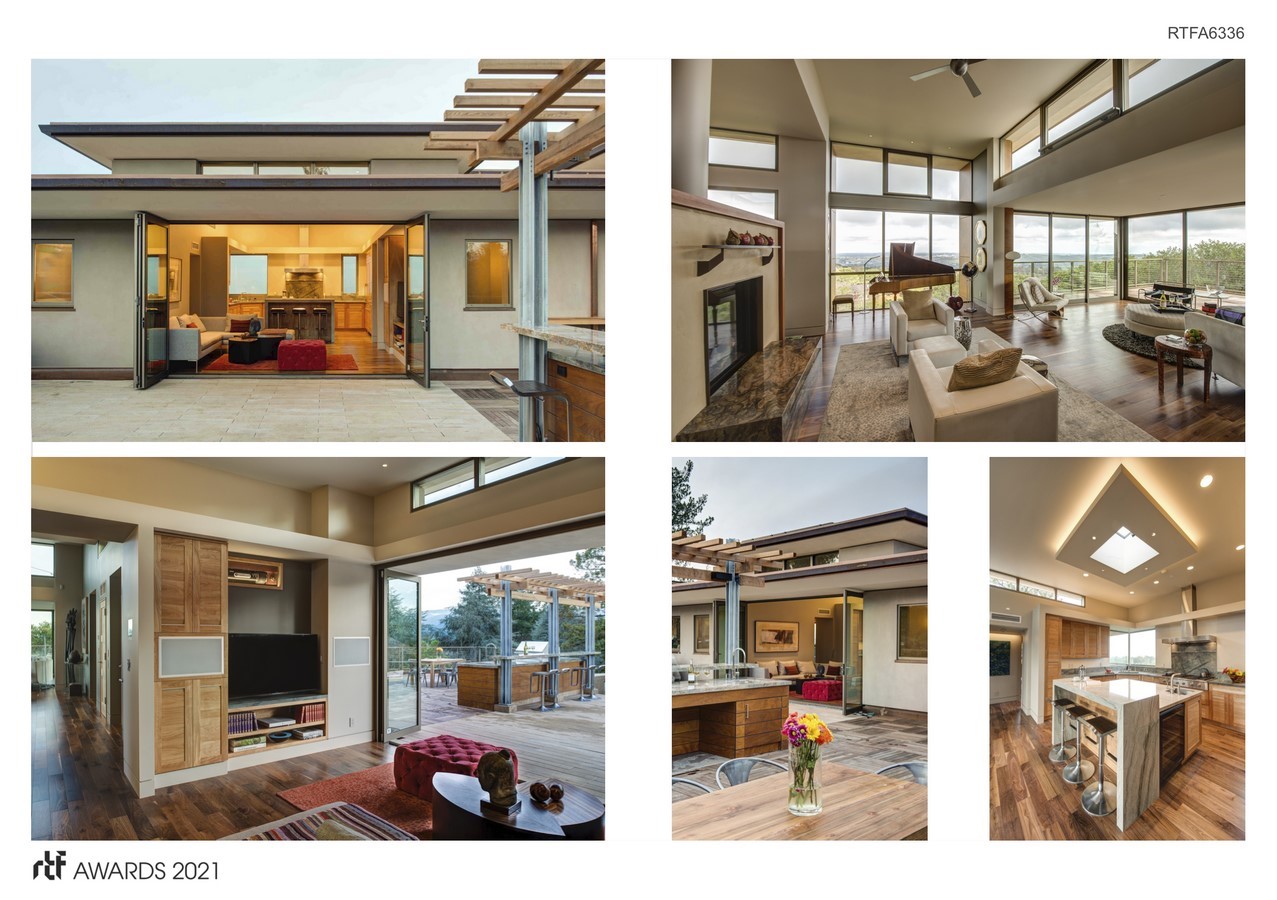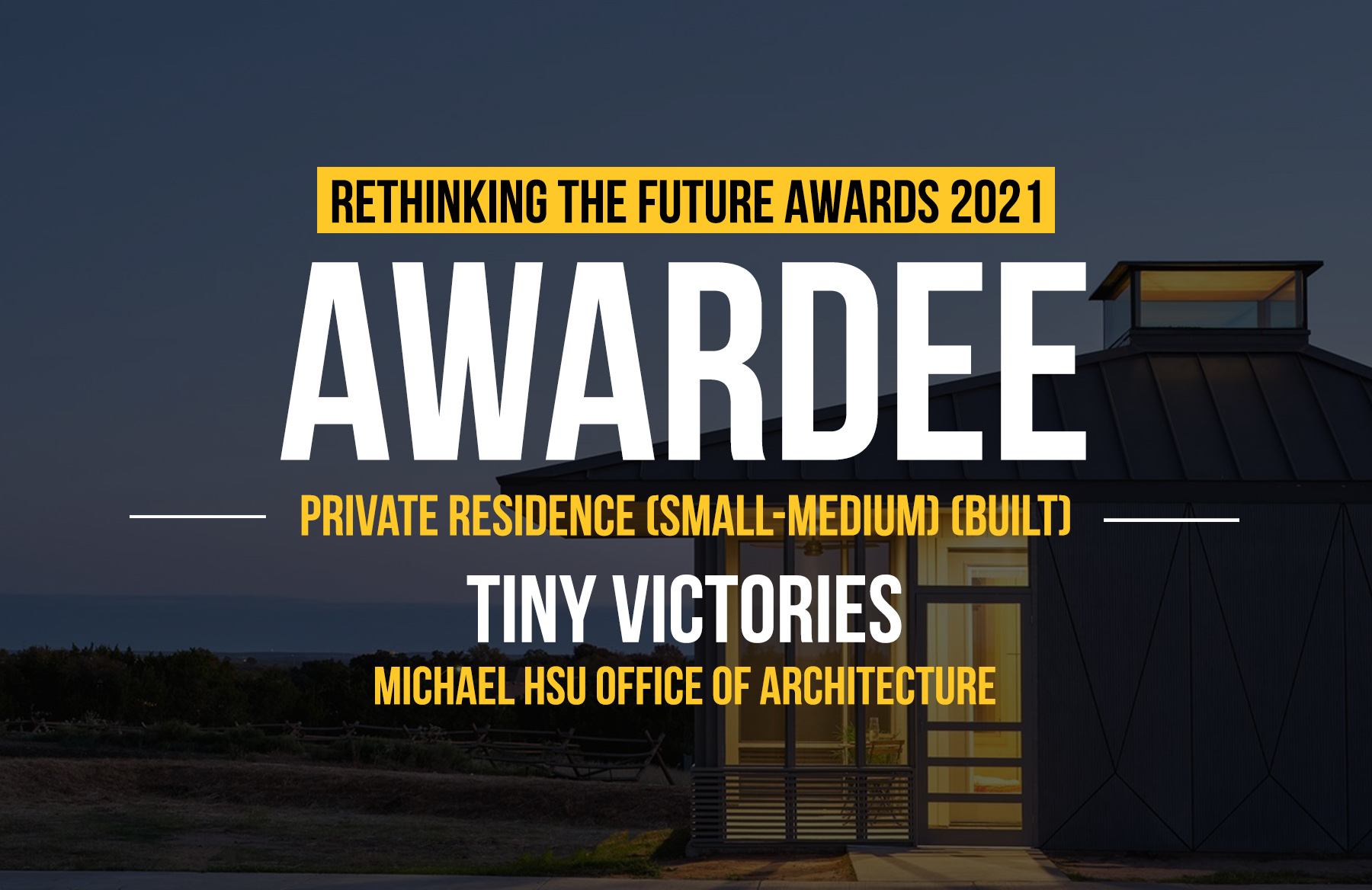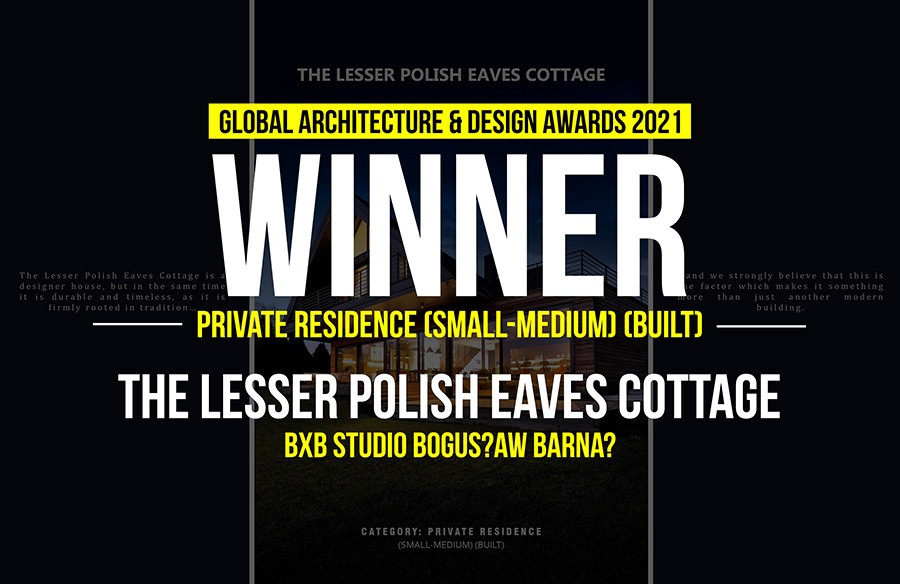When a young San Francisco couple, tired of their long commute, decided to move closer to work in the Silicon Valley, they engaged 2M Architecture to design their dream home. The property they chose was a steeply sloped and wooded hillside, offering expansive views of Bay Area. Located just over 1 mile from the San Andreas Fault, they tasked their design team to find a superior solution to the “Life Safety” standard required by Code. The team combined advances in seismic analysis and building technology to create for the owners one of the most seismically resilient houses built in the US.
Rethinking The Future Awards 2021
Third Award | Private Residence (Large) (Built)
Project Name: Hillside House
Studio Name: 2M Architecture
Design Team: Marc Lindsell and Mark Tetrault
Area: San Francisco Bay Area, California
Year: 2017
Location: Town of Portola Valley
Consultants: Landscape: Kimberly Moses Design
Structural: FTF Engineering
Civil: VIA Engineering
Lighting: Techlinea
Mechanical: Timmons Engineering
Photography Credits: Treve Johnson
The new home features the stacking of public spaces above the bedroom level, and the new basement houses a game room with pool table, large wine cellar and state-of-the-art home theater. On the top level, the kitchen and family room sit side-by-side creating a shared space, with an expansive floor-to-ceiling folding door system allowing the rooms to open completely to the south-facing upper terrace and garage roof deck. An outdoor cooking area supports both family dinners as well as large gatherings of friends and family. Also on the top level, a living room and lounge area open to a large deck cantilevered high above the ground and oriented to the northern views. The feeling of being “in the trees” enhances the connection to the impressive landscape.
The owners and architects realized that a large redwood tree standing near the existing building would not survive construction as it was already in poor health. In keeping with the fundamental design principles of re-use, site harvesting and sustainability, the team decided to have the tree milled for use as featured elements in the home. The living room is separated from the dining room by a double-sided fireplace that also serves as a room divider. Redwood slabs milled from the tree were carefully crafted and book-matched to form the cladding of the fireplace element. In this way, a prominent feature of the site was re-purposed into a core element of the home. Similarly, sandstone boulders harvested from the basement excavations were used to create the dry-stack stone retaining walls throughout the landscape. This single decision removed the cost of trucking and disposing of 200 cubic yards of stone. It also removed the need to purchase and truck the same quantity of a different stone to the project site. The architects and landscape architects took great care to embed sustainable principles into the site and grounds. “This home feels truly of the land,” expressed the owners upon moving in.

